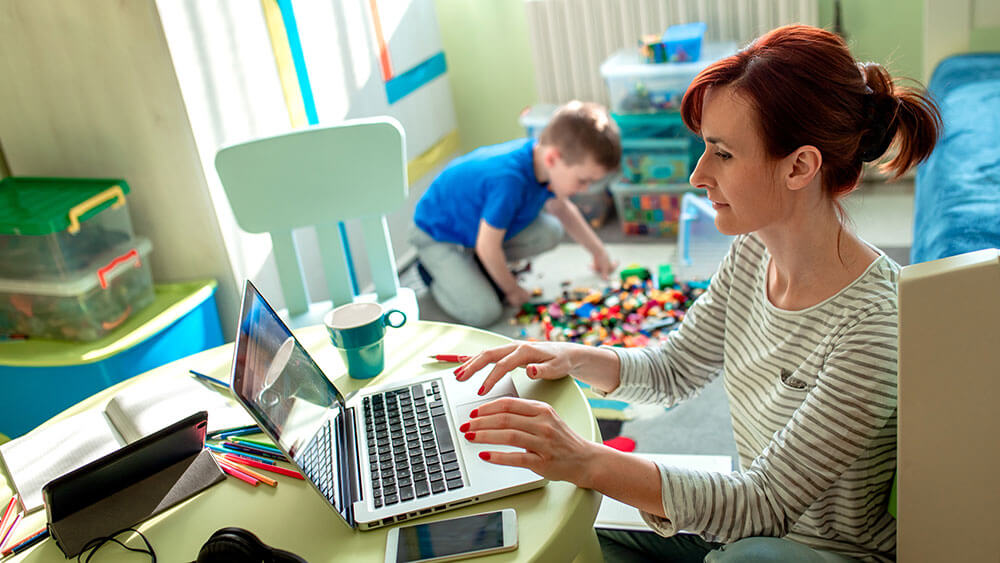
According to a recent survey, people working from home with children are more productive than those working without other adults or children in the home.
Scores of employees have been forced to work from home during COVID-19, many juggling childcare and other responsibilities. Has that negatively affected their productivity? Not in the least, if you go by “The Real Productivity Impact of Remote Work,” a recent report by Valoir. The business and tech research company surveyed 327 people, mainly in North America, who said there has only been a 1-percent negative impact on their productivity since they started to work remotely.
Those working from home with children are 2 percent less productive, and — although it may seem counterintuitive — those working without other adults or children in the home reported the highest decrease in productivity, at 3 percent. According to Valoir, those working alone account for nearly 40 percent of the work-at-home population, with 28 percent working in a home with children, and 46 percent working in a home with other adults.
Respondents to the survey, which included 20 in-depth interviews, said their average workday is nearly 10 hours, with a start time of 8:15 a.m. and end time of 6 p.m.
Their biggest distraction, taking up around two hours a day on average, they said, is social media.
Most respondents gave their employers a good grade when it came to supporting remote work, and four out of 10 said they would prefer to move to full-time remote work after stay-at-home rules have been lifted.
And while we are in the midst of a health crisis, more than one-third of respondents said they were more worried about their job security than the health threat COVID-19 posed to them or their families — 27 percent vs. 22 percent, respectively.
The report’s summary highlighted the need for employers to provide more clearly defined processes and workflows “so they can be accomplished without an in-office culture and enabling employees to be engaged and committed to their work without in-person human reinforcements.” No matter how long the current situation lasts, according to the report, “it will have a significant impact on what we consider a normal workday for the foreseeable future.”
